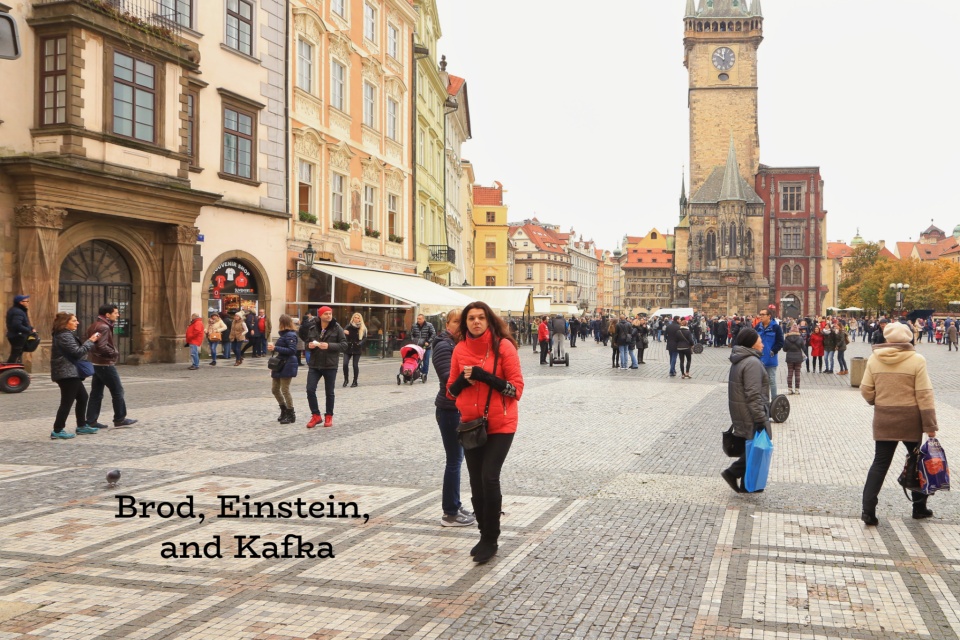Above/featured: Old Town from the Bodensee (Lake Constance): visible from left-to-right are respectively the broad-roofed Konzilgebäude (Council Building), Münster (tall Cathedral spire behind sailboat), and the Dominikanerinsel (Dominicans Island). Photo on 23 Sep 2017.
6 July is a national holiday in the Czech Republic; the formal name is “the day Jan Hus was burned at the stake” (Den upálení mistra Jana Husa).
I wrote previously about medieval Bohemian theologian and reformer Jan Hus (John Huss) whose teachings in the relatively novelty of the Czech language and criticisms about abuse and injustice within the Catholic Church predated Martin Luther’s own revolution for change by almost 100 years. Hus’ place within Czech history is fixed onto the nation with a giant memorial sculpture at the centre of Old Town Square in the capital city of Prague. His place is also assured in the European Reformation as seen in full display at the world’s largest Reformation Monument in the German city of Worms. Hus’ conviction and execution and the resulting armed conflicts would give rise not only to the concept of European unity (see also the prominent Czech historical figure George of Poděbrady), but would also give way to the European continental wars of religion.
As key historical aspects for creating unique Bohemian and subsequent Czech identity, Hus’ life, final days, and death are also a part of the historical record in the southern German city of Konstanz (Constance in English, Kostnice in Czech).
How Hus got here
The backdrop was the one of the largest conferences in the Middle Age. The Council of Constance met from 1414 to 1418, during which one key directive of the synod was to decide once and for all a single pope from three candidates. With the Council’s election of Pope Martin V in 1417, the Papal Schism which began in 1378 effectively came to an end; this would also be the one and only time a pope was elected on German soil. As the only meeting of its kind held north of the Alps, this massive medieval assembly gathered tens of thousands of people, including religious, political, civic, and social leaders; scholars and other civic officials; as well as traders and merchants from around the continent.
Constance had become a free Imperial city in the late 12th-century, allowing the city to prosper by trade of many goods around the European continent and onto the Mediterranean to destinations in Africa and the Middle East. The city was chosen to host the 15th-century conference, because the city as bishopric had sufficient space and resources to host, house, and feed a very large number of conference guests. Constance has the nickname “Stadt des Konzils” or the “Council City”, and has been included as part of the Hussite Cultural Route (Hussitische Kulturroute), which traces Hus’ final journey from Prague to Konstanz.
As follower of English philosopher John Wycliffe, Hus spoke out on flagrant abuse and corruption, especially on the sale of indulgences with the act of forgiveness for sin being used as a tool to increase church income. At a time when the church claimed complete spiritual, moral, and civic authority, Hus was an obvious troublemaker, and the central church authority punished him with censure and excommunication. Hus was called to travel from Prague to Konstanz and answer charges of heresy at the Council of Constance. He ignored the pleas of friends and colleagues to stay put (“it’s a trap!”), and armed with an apparent imperial promise of safe passage and conduct, he set off on his journey to Konstanz. Upon arrival in November 1414, the promise was naught and the betrayal complete; Hus was promptly arrested, imprisoned, and tortured in various places throughout the area for several months. In refusing to recant over his criticisms against the church, he was never given a fair trial. The Council convicted him of heresy inside the city’s cathedral on 6 July 1415. Hus was immediately handed over to the civil authority, who condemned him to death by burning at the stake on the same day. Jan Hus is revered as a key historical figure for Czechs and the Bohemian Reformation, just as Martin Luther would be for his role to kick off the German Reformation almost 100 years later.
( Click here for images and more )
47.677950
9.173238


